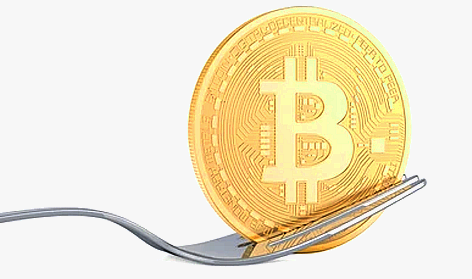Accredited InvestorsAltcoinAnatoli UnitskyAnti-Money Laundering (AML) In CryptoAPIArbitrageArtCoin TokenArticle DirectoryASICAuction Terminology GlossaryBasics of Stock Market InvestingBear MarketBest Crypto Payment Provider In the WorldBitcoinBlockchainBlockchain ConfirmationBlockchain Consensus MechanismBlockchain ForkBlockchain GlossaryBored Ape Yacht ClubBuild a Business That OutperformsBull MarketBuying SkyWay SharesByzantine Fault Tolerance (BFT) ExplainedCasascius CoinCentral Bank Digital Currency (CBDC)Centralized Crypto ExchangeCoinCoinsetCold WalletCollateralCommodity Futures Trading Commission (CFTC)Cross-Chain TechnologyCRUCrypto ExchangeCrypto GlossaryCrypto JokesCrypto Terms to KnowCrypto TickerCryptocurrencyCryptographyCryptojackingCryptounit BlockchainCryptounit GlossaryCryptounit ProgramdApp (Decentralized Application)Dead CoinDecentralized Exchange (DEX)Decentralized Finance (DeFi)Difference Between Bitcoin and EthereumDifferent Ways of Investing MoneyDigital CurrencyDistributed LedgerDo Your Own Research (DYOR)Dollar Cost Averaging (DCA)Dow Jones Industrial Average (DJIA)EncryptionERC-20ERC-721EthereumEvoScentFear Of Missing Out (FOMO)Fear, Uncertainty and Doubt (FUD)Fiat MoneyFNT Fintech CompanyGenesis BlockGlobal Unit PayGlossary of Banking TermsGlossary of Business TermsGlossary of Financial TermsHalvingHODLHot WalletHow Do I Start InvestingHow Rich is Satoshi Nakamoto?How to Create a BlockchainHow to Find Private InvestorsHow to Get Into FintechHow to Program Smart ContractsI Am Thrilled to Be a Part of This Global ProjectInitial Coin Offering (ICO)Initial Public Offering (IPO)Initial Token Offering (ITO)Innovation Basalt TechnologyInnovative Transportation TechnologiesInternational Bank Account Number (IBAN)Investing in Gold Mining StocksInvesting in Gold MiningJagerJoy of Missing Out (JOMO)Know Your Customer (KYC)LedgerLiquidity in CryptocurrencyMaker and Taker Fees in Crypto TradingMarket Capitalization (Market Cap)Meme CoinMetal Credit CardMetaMaskMillenials Now Have Access to Generational WealthMy Best Investment EverNew Digital EvolutionNFT GlossaryOff-Chain TransactionsOn-Chain TransactionsOpen Edition NFTPeer-to-Peer (P2P)Personal Loan GlossaryProbably the Best STO on the MarketProof of Stake (PoS)Real Estate Glossary of TermsReal Estate Investing GlossaryRebase TokenSecurities and Exchange Commission (SEC)Security Token ExchangesSecurity Token Offering (STO)Soulbound Decentralized Identities for Security TokensSoulbound ID Launch by Stobox Proves a SuccessSoulbound TokensStoboxStock Market GlossaryTestimonialsTether Platform and Token (USDT)UnitEx ExchangeUnitsky String TechnologiesUNTBUSDUValidatorWe Started Investing When We Were 25What are Blue Chip NFT?What are Blue Chip Stocks?What are Crypto Assets?What are Crypto Smart Contracts?What are CryptoPunks NFT?What are Digital Assets?What are Digital Collectibles?What are Gas Fees?What are Gas Wars?What are Hashmasks?What are Non Fungible Tokens?What are Non-Sufficient Funds (NSF)?What are Soulbound Tokens (SBT)?What are Stablecoins in Crypto?What are Transactions Per Second (TPS)?What are Utility NFTs?What are Utility Tokens?What Does Burning Crypto Mean?What Does Diamond Hands Mean?What Does Paper Hands Mean?What Does To The Moon Mean?What Does WAGMI Mean?What Happened to Satoshi Nakamoto?What is a 51% Attack?What is a Baby Boomer?What is a Backlink?What is a Banner?What is a Barcode?What is a Bid-Ask Spread in Crypto?What is a Block in Blockchain?What is a Block Reward?What is a Blockchain Address?What is a Blockchain Node?What is a Blockchain Oracle?What is a Blog?What is a Bond?What is a Bot?What is a Broker?What is a Business Accelerator?What is a Cash Cow?What is a Commercial Bank?What is a Commodity?What is a Con?What is a Credit?What is a Credit Limit?What is a Credit Rating?What is a Crypto Airdrop?What is a Crypto Bridge?What is a Crypto Scam?What is a Crypto Token?What is a Crypto Wallet?What is a Crypto Whale?What is a Crypto Winter?What is a Cryptocurrency Public Ledger?What is a Cryptocurrency Roadmap?What is a DAO?What is a Dark Pool?What is a Day Trader?What is a Dead Cat Bounce?What is a Default?What is a Derivative?What is a Digital Credit Card?What is a Fiscal Quarter?What is a Fungible Token?What is a Governance Token?What is a Grace Period?What is a Hard Fork?What is a Hot Wallet?What is a Hybrid Blockchain?What is a Hybrid PoW/PoS?What is a Joint Account?What is a Market Cap?What is a Merkle Tree in Blockchain?What is a Mining Farm?What is a Nonce? What is a PFP NFT?What is a POS System?What is a Prepaid Card?What is a Private Blockchain?What is a Private Key?What is a Public Blockchain?What is a Public Key?What is a Reserve Currency?What is a Ring Signature?What is a Routing Number?What is a Rug Pull in Crypto?What is a Safe Deposit Box?What is a Satoshi?What is a Security Token?What is a Seed Phrase?What is a Shitcoin?What is a Sidechain?What is a Soft Fork?What is a Spot Market?What is a State Bank?What is a SWIFT Code?What is a Tax Identification Number (TIN)?What is a Time Deposit?What is a Transaction Account?What is a Variable Interest Rate?What is a Virtual Assistant (VA)?What is a Virtual Card?What is a Virtual Currency?What is a Visa Card?What is a Whitelist in Crypto?What is a Whitepaper?What is Accounts Payable (AP)?What is AMA in Crypto?What is Amortization?What is an Accrual?What is an ACH Transfer?What is an Actuary?What is an Addendum?What is an Algorithm?What is an Angel Investor?What is an Annuity?What is an Asset?What is an ATM?What is an Atomic Swap?What is an Audit?What is an Avatar?What is an EIN?What is an Embargo?What is an Entrepreneur?What is an IDO (Initial Dex Offering)?What is an Interest Rate?What is an Internet cookie?What is an Investment Bank?What is an NFT Drop?What is an NFT Floor Price?What is an Ommer Block?What is an Orphan Block?What is an Outstanding Check?What is an Overdraft?What is Artificial Intelligence (AI)?What is B2B (Business-to-Business)?What is B2G (Business-to-Government)?What is Bartering?What is Bitcoin Dominance?What is Bitcoin Pizza Day?What is Blockchain Immutability?What is Blockchain Used For?What is BRICS?What is Business-to-Consumer (B2C)?What is C2C (Customer to Customer)?What is Capitalism?What is Catfishing?What is CFD Trading?What is Check Kiting?What is Cloud Mining?What is Communism?What is Content Marketing?What is Decentralization in Blockchain?What is DeFi in Crypto?What is Delisting?What is Depreciation?What is Digital Marketing?What is Diversification?What is Double Spending?What is Dumb Money?What is Dumping?What is Earnings Per Share (EPS)?What is Economics?What is Email Marketing?What is Equity?What is Etherscan?What is Fintech?What is Foreign currency?What is Forex?What is Fundamental Analysis (FA)?What is GameFi?What is Generative Art NFT?What is Gwei?What is Hard Currency?What is Hash Rate?What is Hashing in Blockchain?What is Inflation?What is Initial Game Offering (IGO)?What is Interest?What is Interest Income?What is Mainnet?What is Mastercard?What is Metaverse in Crypto?What is Mining in Cryptocurrency?What is Minting NFT?What is Mobile Banking?What is Money Laundering?What is NFT Alpha?What is NFT Metadata?What is NFT Rarity?What is NGMI Meaning?What is Nominal Interest Rate?What is Online Banking?What is Open-End Credit?What is OpenSea NFT Marketplace?What is Personal Identification Number (PIN)?What is Play-to-Earn?What is Polygon?What is Proof of Authority (PoA)?What is Proof of Work (PoW)?What is Public Key Cryptography?What is Pump and Dump?What is Quantum Computing?What is Refinancing?What is Retail Banking?What is Ripple?What is Sharding?What is Slippage in Crypto?What is Smart Money?What is Solvency?What is Soulbound ID?What is SSL?What is Staking in Cryptocurrency?What is Technical Analysis (TA)?What is Testnet?What is the Ask Price?What is the Better Business Bureau (BBB)?What is the Bid Price?What is the Dark Web?What is the InterPlanetary File System (IPFS)?What is the Gold Standard?What is the Lightning Network?What is the Prime Rate?What is the Sandbox?What is the Secondary Market?What is the World Bank?What is Tier 1 Capital?What is Tokenomics?What is TRC-20?What is Universal Banking?What is Unspent Transaction Output (UTXO)?What is Usury?What is Volatility in Crypto?What is Wash Trading?What is Web3?What is Whisper?What is XRP?What is Zero-Knowledge Proof (ZKP)?Who is Beeple?Who is Satoshi Nakamoto?Who is Vitalik Buterin?Why Tokenization is a Safe HavenWhy You Should Try Your Hand at Trading
What is a Soft Fork?
- Home
- Blockchain Glossary
- What is a Soft Fork?
When it comes to understanding the structure of blockchain technology, what we see on the surface is just the tip of the iceberg. The visible components include a ledger that records transactions, a consensus mechanism for updates, and cryptographic information storage.

However, there are numerous backend processes that remain hidden from those who are not active participants or nodes in the network.
One such process is known as "forking," which occurs when upgrades are made to the blockchain and its processes. In order for forking to occur, the majority of developers must agree to the upgrade. Forking can happen in two ways: a soft fork or a hard fork. This article will focus specifically on the concept of a soft fork within a blockchain, including its functionality and how it differs from a hard fork.
What is a Soft Fork?
A soft fork is a type of upgrade to a blockchain network that maintains backwards compatibility with previous versions of the blockchain software. In other words, a soft fork is a change in the rules of the blockchain that doesn't require all nodes in the network to upgrade their software. This means that nodes running the old software will still be able to validate new transactions and remain part of the network.
Soft forks are usually implemented when there is a need to make minor changes to the blockchain's protocol. For example, a soft fork might be used to increase the block size limit or to modify the consensus rules governing how blocks are validated. These changes are designed to improve the blockchain's functionality without causing major disruptions to the network.
Soft forks work by introducing new rules that are stricter than the existing rules. This means that nodes running the old software will still be able to validate new transactions, but they will reject transactions that don't conform to the new rules. Nodes running the new software will still be able to validate transactions that conform to both the old and new rules.
One advantage of a soft fork is that it requires less coordination among nodes in the network than a hard fork. Since nodes running the old software can still validate new transactions, there is no need for all nodes to upgrade their software at the same time. This can help to minimize disruptions to the network and reduce the risk of a split in the blockchain.
However, there are also some limitations to soft forks. Since they maintain backwards compatibility with the old software, soft forks cannot make radical changes to the blockchain's protocol. In addition, soft forks can sometimes create confusion among users and developers who may not be aware of the new rules.
Understanding the Distinctions Between Soft Forks and Hard Forks
When it comes to upgrading a blockchain network, there are two main types of forks: hard forks and soft forks. The following table highlights the differences between these two types of forks in terms of their characteristics:
| Characteristics | Soft Forks | Hard Forks |
|---|---|---|
| Authority Level | Changes occur at the network level and can be made by a small section of developers for minor upgrades | Often involve changes to the original protocol, requiring a stronger consensus among nodes and miners |
| Chain Split | The original chain continues forward with minor upgrades, and there is no splitting | The original chain splits into two, creating a new chain |
| Upgradation Requirements | Only users who require the upgrades need to upgrade their network | All users on the network need to agree to the new chain to use it |
| Vulnerability | Backward-compatible, enabling attackers to reinstate an earlier model by manipulating the nodes | Not backward-compatible, making it possible for hackers to manipulate the consensus and create a hard fork |
| Power Requirements | Generally requires 51% hash power for a soft fork | Requires high computational power since a new sidechain is generated from the original one |
In summary, hard forks involve more significant changes to the blockchain's protocol, requiring a stronger consensus among nodes and miners. This can result in a chain split, creating a new chain that not all users may agree to.
Soft forks, on the other hand, introduce minor upgrades to the network, and the original chain continues forward without splitting. While both types of forks have their advantages and limitations, understanding their differences is crucial in determining which type of fork is best suited for upgrading a particular blockchain network.
The Financial Implications of Soft Forks
The occurrence of forks in the blockchain network can have a considerable impact on the value of cryptocurrencies. This is because any significant changes made to the underlying fundamentals of the currency may influence market perceptions of its value.
In the case of a soft fork, changes may be made to the security network or consensus mechanism of the currency. These changes may increase or decrease the value of the currency based on how favorable or unfavorable the market perceives them to be. If miners attempt to introduce a soft fork and fail to do so, it can cause a decrease in the asset's value. This is because the market perceives the mining community as inflexible and hostile, which may result in lower prices.
Although soft forks do not split the blockchain, they can still impact the financial stability of cryptocurrencies. While not as disruptive as hard forks, investors need to be aware of how soft forks work and their potential financial impact.
In summary, the occurrence of a soft fork can impact the value of a cryptocurrency. As such, investors need to remain informed about changes in the underlying protocol of the currency and how they may impact their net worth.
Related Articles

Blockchain Fork
A blockchain fork is a situation that occurs when the nodes in the network cannot reach a unanimous consensus regarding the future state of the blockchain. In other words, when...

What is Hashing in Blockchain?
Each block contains a unique digital fingerprint or hash that is generated by applying the hash function to the block's contents. This hash value serves as a unique identifier for the...

What is a Hard Fork?
While hard forks are a common method for updating software protocols in blockchain networks, not all cryptocurrencies support this approach. Instead, many prefer to use soft forks, which are...
- Home
- Blockchain Glossary
- What is a Soft Fork?